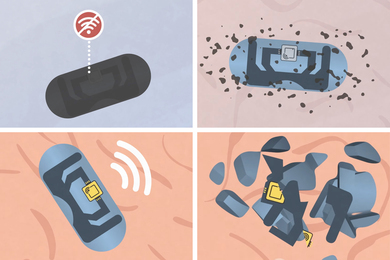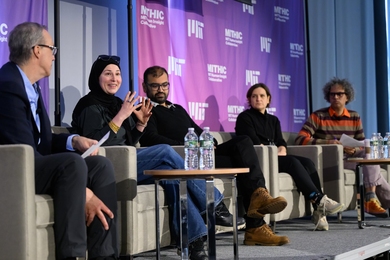A team of researchers from NYU and Yale -- including a researcher now at MIT -- have found a connection between a specific portion of the brain and the unconscious evaluation of race.
In a study published in the September issue of The Journal of Cognitive Neuroscience, the researchers explain how they used fMRI (functional magnetic resonance imaging) to explore the role of the amygdala, a subcortical structure known to be involved in emotional learning and evaluation, in a person's evaluation of racial groups.
The researchers found that subjects who showed a larger race evaluation bias, as detected in a mental association task and a startle response, also showed greater activity levels in regions of the amygdala while viewing unfamiliar faces or a particular race.
Authors of the paper are New York University cognitive neuroscientist Elizabeth Phelps and Yale University social psychologist Mahzarin Banaji, along with co-authors Kevin J. O'Connor, a graduate student in MIT's Department of Brain and Cognitive Sciences who worked on the study while he was a research associate at Yale, and William A. Cunningham, E. Sumie Funayama and J. Christopher Gatenby of Yale University.
MEASURING RESPONSE
The study consisted of two experiments. In the first, 14 white men and women were placed in an MRI scanner and asked to view pictures of unfamiliar black and white male faces with neutral expressions. For each picture, subjects were asked to press one button if the picture was the same as the preceding picture and another if the picture was different. While subjects made these judgments, activation of the amygdala (an indicator of blood flow) was measured.
After the imaging session, each subject participated in three additional behavioral tasks: the Implicit Association Test (IAT), a startle response and a survey.
The IAT measures the automatic association of positive and negative qualities to black and white social groups. The measure is based on time to respond to pairings of black+good/white+bad versus the opposite. The IAT may be sampled on the web.
The startle response while viewing the unfamiliar black and white faces is greater in the presence of stimuli that are considered to be negative. Presenting random loud noises while subjects viewed the faces evoked the startle reflex. An electromyogram (EMG) was used to measure the magnitude of the startle eyeblink response, an early component of the startle reflex.
The researchers found that the strength of the amygdala activity during the startle response test was related to unconscious social evaluation. That is, the stronger the activation in the amygdala, the stronger the bias on the test of association between race and postive or negative evaluation and the degree to which subjects startled in the presence of black vs. white faces. These are two behavioral measures that are not under an individual's direct conscious control.
In contrast to these correlations, there was no relation between amygdala activation and conscious racial attitude as assessed with the Modern Racism Scale, a survey that measures consciously expressed attitudes toward race.
The second experiment was identical to the first, with the exception that 12 different white subjects viewed pictures of famous and well-liked black and white individuals. In this experiment, there was no consistent pattern of amygdala activation to the black versus white faces and no relation between subjects' performance on the behavioral tasks and activity in the amygdala.
LIMITED CONCLUSIONS
"These results are significant because they link implicit measures of racial evaluation to neural mechanisms known to be important in everyday emotional learning and memory," said Dr. Phelps. "In this study we chose to focus on the amygdala because of its known role in emotional learning and evaluation. We found that a given subject's amygdala activity in response to unfamiliar black versus white faces is related to his or her performance on indirect measures of race evaluation."
She and Dr. Banaji said that the results cannot be taken as a means of testing for racism in individuals.
"Our interpretation of the present study is that both amygdala activation, as well as behavioral responses of race evaluation, are reflections of social learning. It is common to think of the relationship between the brain and behavior as a one-way street, with brain function leading to behavior. This simple interpretation misses the complex interaction between the brain, behavior and experience," they said.
"Just as behavior changes with experience, so does the brain. Widespread cultural evaluations of black and white Americans, personal experiences with members of these groups, and one's own membership in these groups can all contribute to the magnitude of race evaluation bias.
"As our work shows, these experiences are also reflected in neural activity, as these measures are correlated. In addition, we warn against interpretation of these results or measures as indicators of 'racism.' The measures used in this research should not and cannot be assumed to be a battery of tests that can be used to reveal an individual's hidden racism. It would be improper to use them in any selection or diagnostic context," concluded Drs. Phelps and Banaji.
A version of this article appeared in MIT Tech Talk on September 20, 2000.





